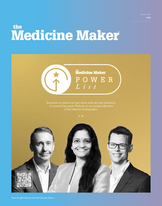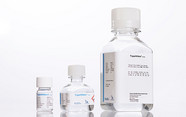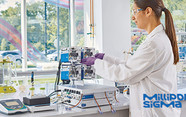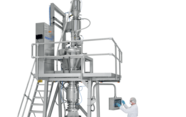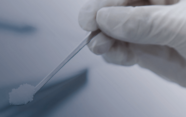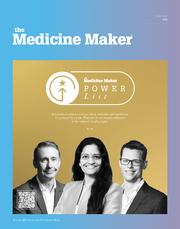The Economics of Biosimilars
We ask James Chambers from Tufts Medical Center about the challenges faced by biosimilars in the US
Stephanie Vine | | 7 min read | Interview

Biosimilars offer cost savings, increased patient access, and a competitive counterbalance to high-priced biologics, but their impact in the US is being held back by payer policies and physician hesitancy. In 2019, only 14 percent of US commercial health plans covered biosimilars as preferred products, even though they were positioned as lower-cost alternatives to reference biologics. Today, coverage has improved, but inconsistencies remain, particularly with interchangeability rules and reimbursement strategies. Meanwhile, ongoing policy shifts, including Medicare price negotiations under the Inflation Reduction Act, could unintentionally dampen biosimilar competition rather than fuel it.
We spoke with James Chambers, a health economist at Tufts Medical Center and spokesperson for Organon to learn more about the challenges facing biosimilars today and what the future may hold.
You originally studied pharmacy. How did you go from there to health economics?
I started out studying pharmacy at Queen’s University Belfast, but I quickly became interested in the bigger picture. As a practicing pharmacist, my main focus was patient care, but I also wanted to understand how factors such as pricing and insurance coverage impacted treatment access. That curiosity led me to health economics, where I started exploring how market dynamics influence patient access to specialty medications. My hope is that by examining these issues through an economic lens, I can contribute to the larger conversation about improving affordability and access in the health care system.
What is the current state of play with biosimilars in the US?
Biosimilars are reshaping the competitive landscape by driving down prices and increasing treatment access through competition in the marketplace. They are providing lower-cost alternatives to reference biologics, which in turn has forced innovator companies to reconsider their pricing strategies. What generics did for the US health care system in the 20th century, biosimilars have the potential to do in the 21st century.
However, adoption in the US has been slower compared to other countries, where their value has been more widely realized. That said, biosimilars have had a significant impact on patients’ access to necessary medications, providing over 344 million incremental days of therapy. In 2024, using the Tufts Medical Center Specialty Drug Evidence and Coverage (SPEC) database, my team conducted a study in which we analyzed coverage, market share, and pricing information for seven originator products and 20 corresponding biosimilars. In our analysis, we found that preferred coverage of multiple products increased from 30 percent to 76 percent between August 2017 and August 2022. However, there’s still considerable variation in how different payers cover biosimilars. The full benefits of biosimilars won’t be realized in the US until key barriers, such as reimbursement policies, provider adoption, and patient awareness, are addressed.
There are vast variations in how biosimilars are covered, compared to reference products, by commercial health plans. In a study we did in 2019, we evaluated coverage policies from the SPEC database, which included specialty-drug coverage decisions issued by 17 of the largest US commercial health plans that make their decisions publicly available (approximately 60 percent of commercially covered lives). We found that US health plans covered biosimilars as “preferred” in only 14 percent of decisions, despite their potential for cost savings. However, more recent research suggests that coverage has improved, with health plans increasingly offering covering biosimilars as preferred products.
Are there still concerns with interchangeability?
One of the main challenges with interchangeability is the lack of clear and consistent guidelines for the substitution of interchangeable biosimilars at the pharmacy level. Without standardized policies, it becomes difficult to ensure that biosimilars are automatically substituted for reference biologics. This creates uncertainty among healthcare providers and patients, which may slow adoption and limit biosimilars’ potential to drive cost savings. Additionally, the lack of clear interchangeability rules means that biosimilars are not always accessible to patients in the same way as their reference products, ultimately hindering their ability to increase competition and improve access to more affordable treatments.
What are the biggest barriers today hindering biosimilars?
Several important barriers continue to hinder biosimilar adoption in the US particularly in the areas of health plan coverage and physician awareness. A study my team conducted in 2023 found that nearly 20 percent of biosimilars faced more restrictive coverage than their reference biologics, despite offering substantial cost savings to the health care system. This inconsistency in how biosimilars are covered creates confusion and may limit patient access. Another major barrier is the limited familiarity of physicians with biosimilars. Some health care providers may still have misconceptions about the safety and efficacy of biosimilars, which contributes to a hesitancy to prescribe them. This lack of education, combined with powerful payers favoring reference biologics through rebate arrangements, further restricts the biosimilar uptake.
It’s important to remember that the true value of biosimilars lies in their ability to increase patient access to essential treatments. To fully realize their potential, a more coordinated effort is needed across stakeholders, including physicians, payers, and policymakers. This means improving education, aligning coverage policies, and creating a competitive market to ensure that biosimilars are affordable and accessible for patients.
Discussions around the cost of drugs continue to increase. Is this increasing the uptake of biosimilars?
Biologics are expensive, and while they may only account for 2 percent of all prescriptions, they have represented about $120 billion, or 37 percent of net drug spending, since 2014. A significant number of patients who need biologic treatments suffer from a chronic disease that requires lifelong management that, historically, may have come with high out-of-pocket costs, even after insurance. Given these financial pressures, biosimilars have the potential to significantly reduce costs in the health care system, and their adoption is beginning to have an impact. Between 2021 and 2025, biosimilars are estimated to save the US health care system $38.4 billion, if adopted.
Do you expect any trends in the biosimilars sector to change with shifting politics in the US?
Shifting political dynamics will likely influence the biosimilars sector, with the Inflation Reduction Act (IRA) as a recent example. As with any change in policy, it’s important to understand which aspects of the health care system might be affected and how new incentives may have intended and unintended consequences. If not properly managed, policy shifts could inadvertently create barriers or regulatory hurdles that slow biosimilar development or access. For instance, there is concern, that the IRA, which introduced Medicare price negotiations for selected drugs, could weaken incentives for biosimilar development and limit the revenue potential for biosimilar manufacturers following price negotiations. Therefore, the policy could ultimately limit competition, keep prices for reference products high, and further restrict patient access to more affordable treatments.
What other broad pharma/healthcare trends interest you and why?
With my background in pharmacy and my research in health economics, I am particularly interested in how insurance companies cover and reimburse various drugs and medical technologies. Given its fragmented system, the US is an interesting landscape to do this research. Additionally, it is interesting to see the varying levels of commitment from companies studying and commercializing biosimilars. Recently, we have seen the departure of several companies from the biosimilars space. This is why I am collaborating with Organon, a company with a commitment to biosimilars, to share insights and contribute to broader industry conversations. It’s encouraging to see recognition from the industry of the importance of bringing biosimilars to market to improve patient access.
Do you have any predictions for 2025?
I anticipate significant progress in terms of increased physician adoption and broader formulary inclusion. We may see greater policy alignment across payer groups, driving more consistent and less restrictive coverage for biosimilars. Additionally, the growing presence of biosimilars may continue to reshape pricing structures within biologic markets, driving more competitive pricing.
From a broader health care perspective, I hope we’ll see continued focus on health care affordability, with a stronger push for policies that encourage the use of biosimilars, generics, and other cost-effective therapies. Access to biologic treatments should be a key priority, especially in chronic disease management where patients may face high out-of-pocket costs My hope is that we’ll see a move toward a health care system that balances innovation with affordability, while ensuring that much-needed treatments remain affordable and accessible to all patients.

Making great scientific magazines isn’t just about delivering knowledge and high quality content; it’s also about packaging these in the right words to ensure that someone is truly inspired by a topic. My passion is ensuring that our authors’ expertise is presented as a seamless and enjoyable reading experience, whether in print, in digital or on social media. I’ve spent fourteen years writing and editing features for scientific and manufacturing publications, and in making this content engaging and accessible without sacrificing its scientific integrity. There is nothing better than a magazine with great content that feels great to read.







